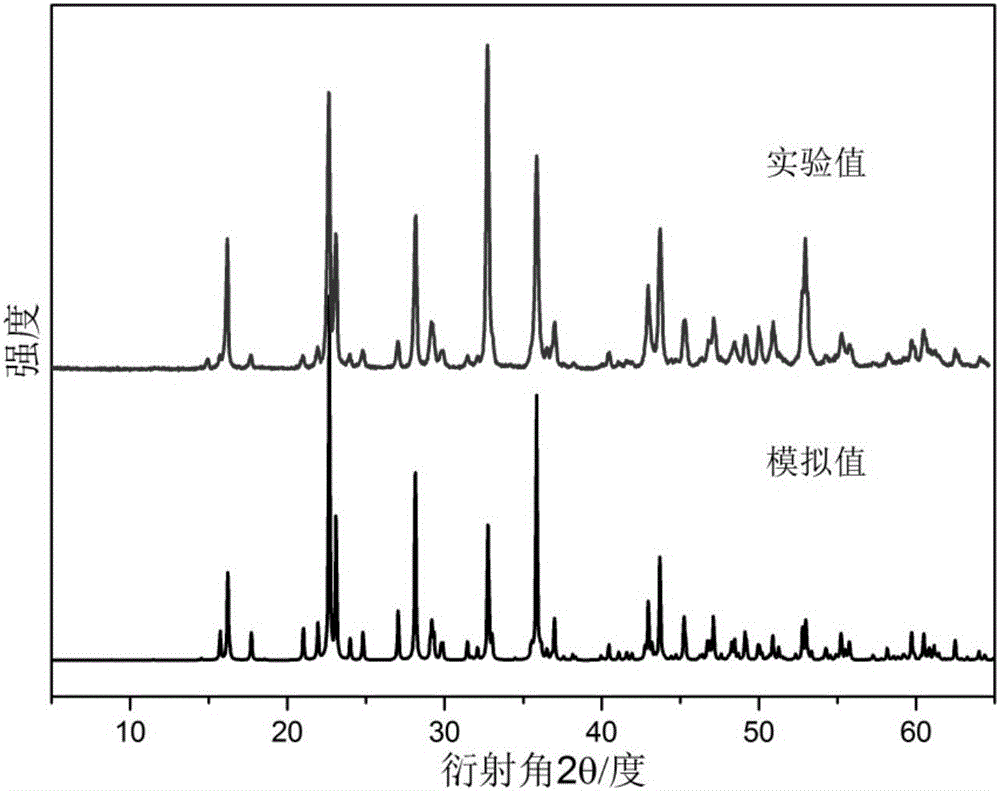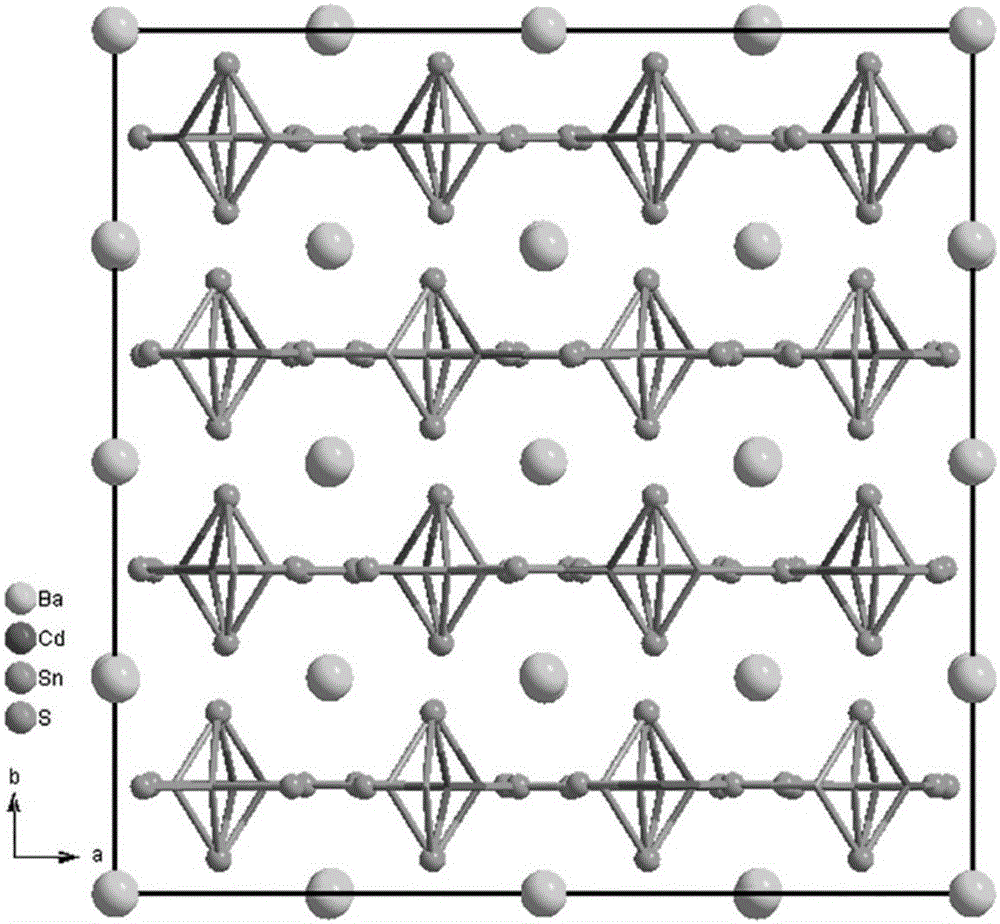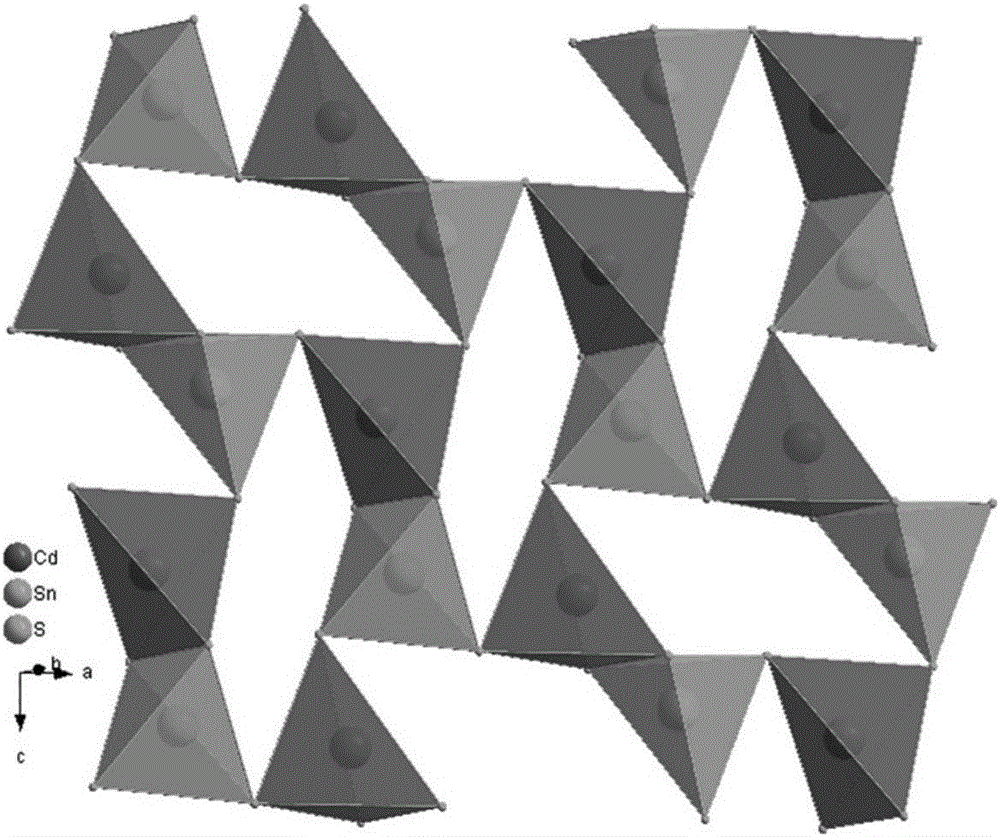Crystal material, method for preparing same and application of crystal material used as infrared nonlinear optical material
A technology of crystal materials and raw materials, applied in the field of nonlinear optical materials, can solve the problems such as the inability to meet the development requirements of nonlinear optical crystal materials, the inability to apply the mid-far infrared band range, and the low laser damage threshold, and achieve excellent infrared nonlinear optics. Performance, nonlinear optics performance improvement, simple steps effect
- Summary
- Abstract
- Description
- Claims
- Application Information
AI Technical Summary
Problems solved by technology
Method used
Image
Examples
Embodiment 1
[0031] Example 1 Sample 1 # ~Sample 5 # preparation of
[0032] After mixing barium sulfide, cadmium powder, tin powder and sulfur powder evenly, place them in a quartz reaction tube and vacuumize to 10 -4 Torr (Torr) and fused with a hydrogen-oxygen flame to seal the quartz reaction tube. Put the quartz reaction tube into the muffle furnace, heat it to the solid solution temperature, and keep it for a period of time. Then, after cooling down to a certain temperature with a certain cooling rate program, turn off the muffle furnace and cool down to room temperature naturally, and the red crystal obtained is the crystal material.
[0033] Table 1 shows the sample number, raw material dosage, solid melting temperature, holding time, cooling rate and programmed cooling temperature.
[0034] Table 1
[0035]
Embodiment 2
[0036] Example 2 Sample 1 # ~Sample 5 # structural representation of
[0037] sample 1 # ~Sample 5 # X-ray powder diffraction phase analysis (XRD) after grinding was carried out on MiniFlex II X-ray diffractometer of Rigaku Company, Cu target, Kα radiation source (λ=0.154184nm). The results show that the samples prepared in Example 1 are all samples with high purity and high crystallinity.
[0038] sample 1 # ~Sample 5 # It has similar powder XRD patterns, that is, the same diffraction peak position and shape, and the relative peak intensity fluctuates within ±5%, indicating that sample 1 # ~Sample 5 # have the same crystal structure.
[0039] sample 1 # ~Sample 5 # The X-ray single crystal diffraction was carried out on a Rigaku Pilatus type single crystal diffractometer, Mo target, Kα radiation source (λ=0.07107nm), test temperature 293K. And through Shelxtl97 for structural analysis. Take sample 1 # As a typical representative, the XRD diffraction pattern obtai...
Embodiment 3
[0043] Example 3 Sample 1 # The frequency doubling test experiment
[0044] For sample 1 # Carry out the frequency doubling experiment test, the specific steps are as follows:
[0045] Using the laser with a wavelength of 1750nm generated by the optical parametric amplification technology (OPO) as the fundamental frequency light, the crystal powder to be tested is irradiated, and the intensity of the 875nm second harmonic generated by the charge-coupled device (CCD) is used to detect the intensity of the second harmonic wave to be tested. Sample and standard sample AgGaS 2 Grind separately, and use standard sieves to sieve crystals of different particle sizes, the particle sizes are 30-50 μm, 50-75 μm, 75-100 μm, 100-150 μm, 150-200 μm and 200-250 μm. Observe the change trend of the frequency multiplier signal with the particle size, and judge whether it can achieve phase matching. Under the same conditions, compare the intensity of the second harmonic generated by the samp...
PUM
 Login to View More
Login to View More Abstract
Description
Claims
Application Information
 Login to View More
Login to View More - Generate Ideas
- Intellectual Property
- Life Sciences
- Materials
- Tech Scout
- Unparalleled Data Quality
- Higher Quality Content
- 60% Fewer Hallucinations
Browse by: Latest US Patents, China's latest patents, Technical Efficacy Thesaurus, Application Domain, Technology Topic, Popular Technical Reports.
© 2025 PatSnap. All rights reserved.Legal|Privacy policy|Modern Slavery Act Transparency Statement|Sitemap|About US| Contact US: help@patsnap.com



